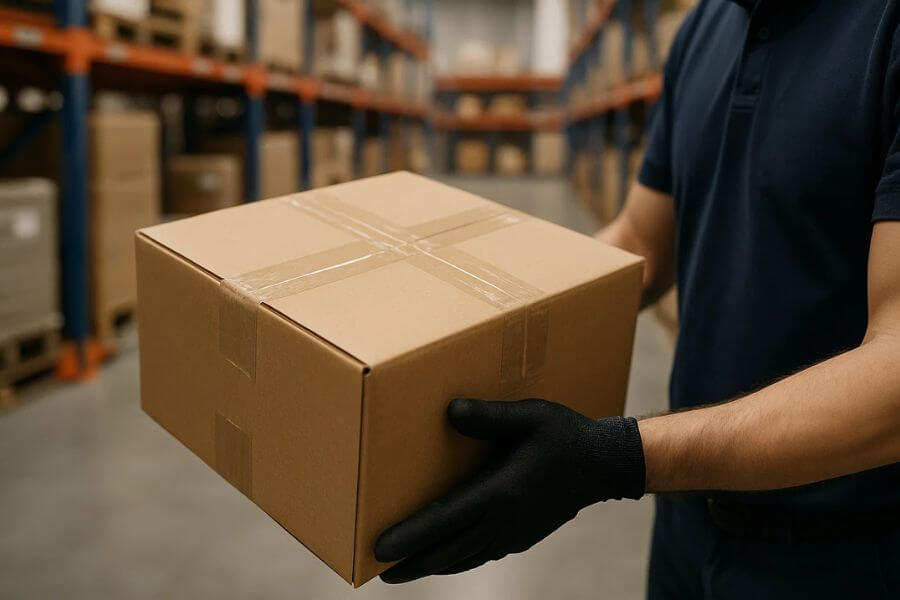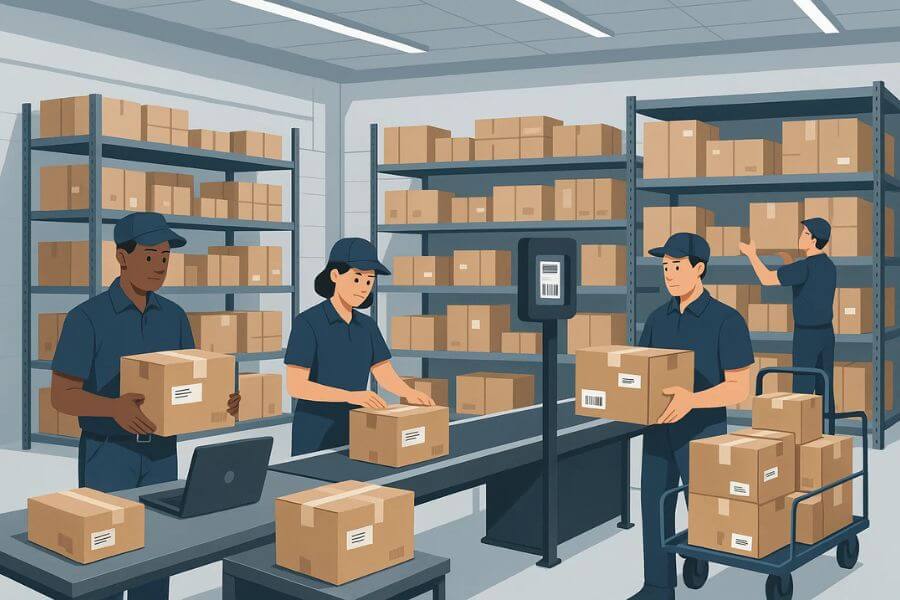As we look ahead to 2025, the world of online shopping is set for some big changes. With new technologies and shifting customer preferences, online stores need to stay on their toes to keep up. In this article, we’ll explore 10 exciting trends that are likely to shape the future of ecommerce. From smarter shopping experiences to eco-friendly practices, these trends will transform how we buy and sell online.
Whether you’re a business owner or a savvy shopper, understanding these upcoming shifts can help you prepare for the future of online retail. Let’s dive in and see what the ecommerce landscape might look like in 2025.
1. AI-driven personalization
Artificial Intelligence (AI) is set to revolutionize the way online shoppers experience ecommerce in 2025. AI-powered personalization will become the new standard, offering tailored experiences that cater to individual preferences and behaviors.
Product recommendations. AI algorithms will analyze customer data, including browsing history, purchase patterns, and even demographic information, to provide highly accurate product suggestions. This level of personalization will significantly improve the shopping experience and increase conversion rates.
Dynamic content. websites and marketing materials will adapt in real-time based on user behavior. From personalized homepage layouts to customized email content, AI will ensure that each customer interaction is unique and relevant.
Predictive analytics. AI will enable businesses to anticipate customer needs and preferences, allowing them to stock inventory more efficiently and create targeted marketing campaigns with greater precision.
By leveraging AI, ecommerce businesses can create a more engaging and efficient shopping experience, leading to increased customer satisfaction and loyalty.
2. Augmented reality (AR) & Virtual reality (VR) shopping
The integration of AR and VR technologies in ecommerce will bridge the gap between online and offline shopping experiences in 2025.
Virtual try-ons. customers will be able to virtually try on clothing, accessories, and makeup using AR technology, reducing the uncertainty associated with online purchases and potentially lowering return rates.
3D product visualization. VR will allow shoppers to explore products in a 3D environment, providing a more comprehensive understanding of items before purchase. For example, customers could virtually place furniture in their homes to see how it fits and looks.
Virtual showrooms. brands will create immersive virtual stores where customers can browse and interact with products as if they were in a physical location, enhancing the overall shopping experience.
These technologies will not only improve customer confidence in online purchases but also provide an entertaining and engaging way to shop, potentially increasing time spent on ecommerce platforms.
3. Voice commerce
As voice-activated devices become more prevalent, voice commerce is expected to gain significant traction by 2025.
Voice-activated shopping. consumers will increasingly use smart speakers and voice assistants to make purchases, check prices, and track orders, all through simple voice commands.
Voice search optimization. ecommerce businesses will need to optimize their product listings and content for voice search, focusing on natural language and conversational keywords.
Voice-based customer service. AI-powered voice assistants will handle customer inquiries, provide product information, and assist with post-purchase support, offering a hands-free and convenient customer service experience.
The rise of voice commerce will require ecommerce platforms to adapt their interfaces and search functionalities to accommodate this new mode of interaction.
4. Sustainable and ethical ecommerce
Sustainability and ethical practices will become major drivers of consumer choice in 2025, influencing how ecommerce businesses operate.
Eco-friendly packaging. companies will invest in sustainable packaging solutions, reducing waste and appealing to environmentally conscious consumers.
Transparent supply chains. businesses will provide detailed information about their supply chains, allowing customers to make informed decisions based on ethical and sustainability considerations.
Carbon-neutral shipping. many ecommerce platforms will offer carbon-neutral shipping options or offset their carbon footprint through various initiatives.
Circular economy integration. more businesses will adopt circular economy principles, offering product recycling, refurbishment, and buy-back programs to reduce waste and promote sustainability.
Ecommerce brands that prioritize sustainability and ethical practices will likely see increased customer loyalty and positive brand perception.
5. Social commerce integration
Social media platforms will continue to evolve into full-fledged shopping destinations, blurring the lines between social interaction and ecommerce.
In-app purchasing. social media apps will offer seamless in-platform shopping experiences, allowing users to discover and purchase products without leaving their favorite social networks.
Live shopping events. brands will host live streaming events on social platforms, showcasing products and allowing real-time purchases, creating an interactive and engaging shopping experience.
User-generated content. customer reviews, photos, and videos will play a crucial role in influencing purchase decisions, with social proof becoming increasingly important in the buying process.
Influencer collaborations. partnerships between brands and social media influencers will become more sophisticated, with influencers playing a larger role in product development and marketing strategies.
The integration of social commerce will provide businesses with new channels to reach and engage customers, while also leveraging the power of social proof and community.
6. Mobile-first approach
With mobile devices accounting for an increasing share of ecommerce transactions, a mobile-first approach will be essential in 2025.
Progressive web apps (PWAs). more ecommerce sites will adopt PWA technology, offering app-like experiences through web browsers and improving performance on mobile devices.
Mobile payment integration. a wider range of mobile payment options will be available, making checkout processes faster and more convenient for smartphone users.
5G-enabled experiences. the widespread adoption of 5G technology will enable richer, more interactive mobile shopping experiences with faster loading times and improved video streaming capabilities.
Mobile-optimized content. product descriptions, images, and videos will be tailored specifically for mobile consumption, ensuring a seamless browsing experience on smaller screens.
Ecommerce businesses that prioritize mobile optimization will be better positioned to capture the growing number of mobile shoppers.
7. Omnichannel retail experience
The lines between online and offline retail will continue to blur, with omnichannel strategies becoming increasingly sophisticated.
Cross-channel integration. customers will expect a consistent experience across all touchpoints, from online platforms to physical stores, with the ability to start a purchase on one channel and complete it on another.
Click-and-Collect services. more retailers will offer click-and-collect options, allowing customers to purchase online and pick up in-store or at designated collection points.
In-store digital integration. physical stores will incorporate more digital elements, such as interactive displays and mobile app integration, to enhance the shopping experience.
Unified customer data. retailers will use advanced data management systems to create a single view of the customer across all channels, enabling more personalized and consistent interactions.
An effective omnichannel strategy will be crucial for providing a seamless and convenient shopping experience that meets the expectations of modern consumers.
8. Subscription-based models
Subscription services will continue to gain popularity in various ecommerce sectors, offering convenience and personalization to consumers.
Personalized subscription boxes. AI-driven algorithms will curate subscription boxes tailored to individual preferences, offering a high level of personalization in areas such as fashion, beauty, and food.
Flexible subscription options. businesses will offer more flexible subscription models, allowing customers to easily pause, modify, or cancel their subscriptions to accommodate changing needs.
B2B subscription services. the subscription model will expand in the B2B sector, with more companies offering software, supplies, and services on a recurring basis.
Subscription marketplaces. platforms that aggregate various subscription services will emerge, allowing consumers to manage multiple subscriptions in one place.
Subscription models will provide businesses with predictable revenue streams while offering customers convenience and personalized experiences.
9. Advanced fulfillment and delivery options
Ecommerce businesses will focus on improving their fulfillment and delivery processes to meet growing customer expectations for speed and convenience.
Same-day & instant delivery. more retailers will offer same-day or even instant delivery options in urban areas, leveraging local fulfillment centers and partnerships with delivery services.
Autonomous delivery. the use of drones and autonomous vehicles for last-mile delivery will begin to see practical applications, especially in areas with favorable regulations.
Micro-fulfillment centers. retailers will establish small-scale fulfillment centers in urban areas to enable faster and more efficient local deliveries.
Predictive shipping. AI and machine learning will be used to predict customer orders and pre-ship products to nearby distribution centers, reducing delivery times.
Efficient and flexible fulfillment options will become a key differentiator for ecommerce businesses, directly impacting customer satisfaction and loyalty.
10. Blockchain in ecommerce
Blockchain technology will find increased applications in ecommerce, enhancing security, transparency, and efficiency.
Supply chain transparency. blockchain will enable end-to-end tracking of products, providing customers with detailed information about the origin and journey of their purchases.
Secure payments. cryptocurrency payments will become more mainstream, offering an additional secure payment option for online transactions.
Smart contracts. blockchain-based smart contracts will automate and secure various processes, from order fulfillment to warranty claims, reducing the need for intermediaries.
Customer loyalty programs. blockchain technology will enable more secure and flexible loyalty programs, allowing for easier point redemption and transfer across multiple platforms.
The integration of blockchain in ecommerce will contribute to increased trust, security, and efficiency in online transactions.
Conclusion
As we’ve seen, the future of online shopping is full of exciting possibilities. By 2025, we can expect a world where technology makes shopping more personal, convenient, and fun. From trying on clothes virtually to ordering with just our voice, these changes will make online shopping feel almost magical. At the same time, we’ll see a growing focus on being kind to our planet and supporting ethical businesses.
For online store owners, keeping up with these trends will be key to success. It’s all about creating smooth, enjoyable experiences for customers across all devices and platforms. And for shoppers, these changes mean more choices, better service, and easier ways to find exactly what we’re looking for.
The ecommerce world of 2025 promises to be more connected, more sustainable, and more tailored to our individual needs than ever before. As these trends unfold, they’ll reshape not just how we shop, but how businesses operate and how we interact with brands online. It’s an exciting time for ecommerce, and these changes are just the beginning of a new era in online retail.





